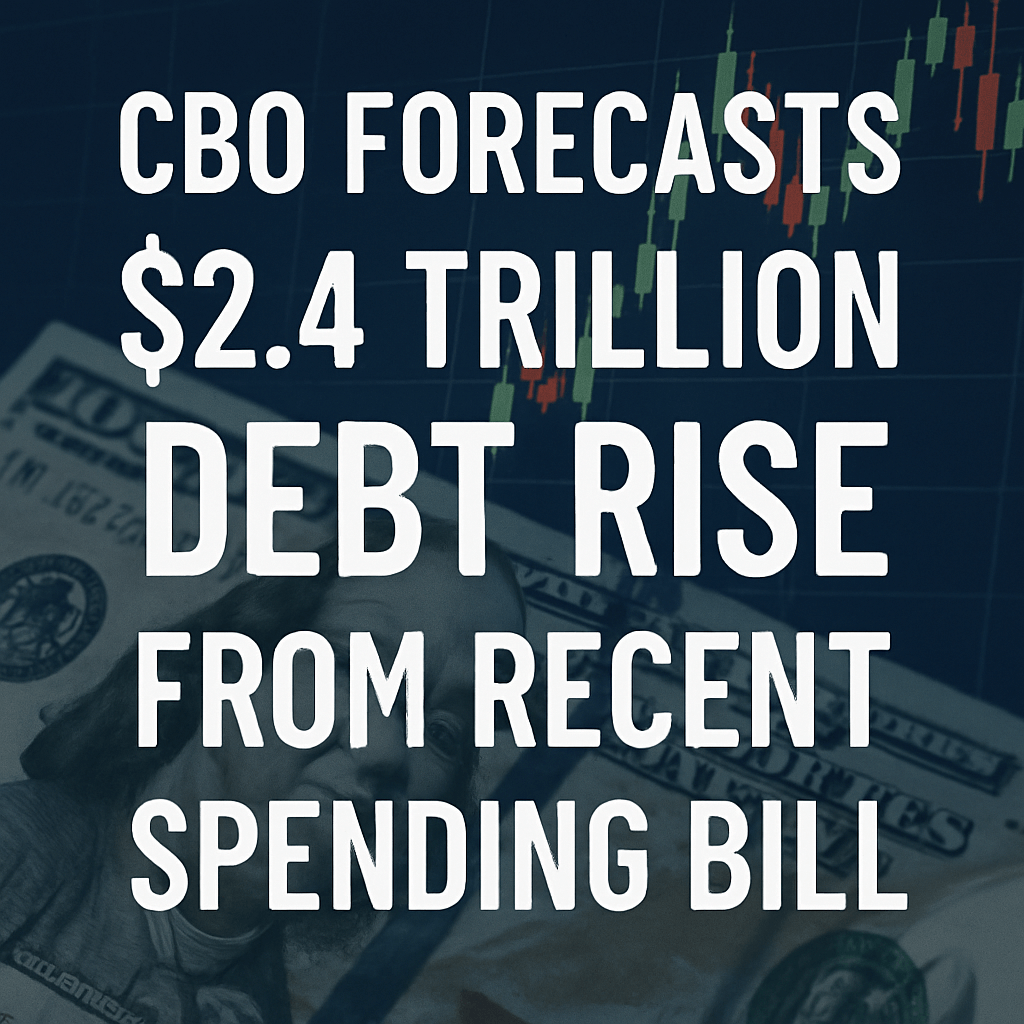CBO Forecasts $2.4 Trillion Debt Rise from Recent Spending Bill

WASHINGTON (AP) — President Donald Trump’s comprehensive spending bill, which is currently advancing through Congress, is projected to increase the national debt by $2.4 trillion over the next decade, according to a report released by the nonpartisan Congressional Budget Office (CBO). This bill aims to cut taxes by a staggering $3.7 trillion, raising substantial concerns regarding its long-term fiscal implications.
Impact on Health Insurance Coverage
The CBO’s analysis indicates a worrying trend in health insurance coverage, predicting that approximately 10.9 million additional individuals could find themselves uninsured as a result of this bill. This includes around 1.4 million individuals who are currently undocumented and participate in state-funded programs. The proposed changes to Medicaid and other healthcare programs are expected to result in a significant 8.6 million people losing health care access and a reduction of 4 million beneficiaries in the Supplemental Nutrition Assistance Program (SNAP) as eligibility reforms are implemented.
Legislative Process and Political Reactions
As this legislation moves through the intricate process of Congress, it has become a focal point of political discourse. Trump has set an ambitious deadline for a signature on this bill, targeting Independence Day for completion. The CBO’s report serves as an essential gauge for lawmakers aiming to assess the economic ramifications of this sweeping 1,000-page package.
“The work of the CBO will play a crucial role in informing lawmakers, who are seeking to understand the budgetary impacts of this substantial bill,” remarked a congressional staff member.
In anticipation of the CBO’s findings, the White House and Republican leadership launched a preemptive critique of its credibility. White House Press Secretary Karoline Leavitt asserted that the CBO’s analyses have been “historically wrong,” while Senate Majority Leader John Thune claimed that the CBO had underestimated revenue generation stemming from Trump’s earlier tax cuts in 2017, which had effectively resulted in a $1.5 trillion increase in receipts. Notably, this increase followed the inflationary pressures witnessed during the COVID-19 period, marking a significant divergence from earlier CBO forecasts.
CBO’s Role and Methodology
The Congressional Budget Office, established in 1974, provides objective economic analyses to aid Congress in formulating budgets and policy decisions. Staffed by approximately 275 economists and analysts, the CBO adheres to strict ethical guidelines to maintain impartiality. Directed by Phillip Swagel, a veteran from the Bush administration, the CBO’s methodology relies on a combination of macroeconomic models and historical data analysis to produce its projections.
Specific provisions of the Bill
Known as the “One Big Beautiful Bill Act,” this legislation seeks to extend individual tax breaks approved in 2017, set to expire in December unless renewed. Alongside the extension of tax cuts, the bill introduces several substantial fiscal measures:
- Elimination of Taxes on Tips: A noteworthy change aimed at boosting earnings for service workers.
- Increased Border Security Funding: The bill allocates $350 billion towards border security initiatives and deportations.
- Increased Debt Limit: A proposed $4 trillion increase in the national debt limit, which currently stands at approximately $36 trillion, allowing the government to meet existing financial obligations.
To mitigate revenue losses from tax cuts, Republicans are suggesting reductions in federal spending, including the phase-out of green energy tax incentives established during the Biden administration. Additionally, the bill proposes new work requirements for certain Medicaid and SNAP recipients, effective December 2026, aimed at managing expenditure on these welfare programs.
Conclusion
As the bill progresses through Congress, it faces staunch opposition from Democrats who derogatorily refer to it as the “big, ugly bill.” The debate surrounding the proposed budgetary changes underscores ongoing tensions regarding fiscal policy and its broader implications for future American economic health.
Source: fortune